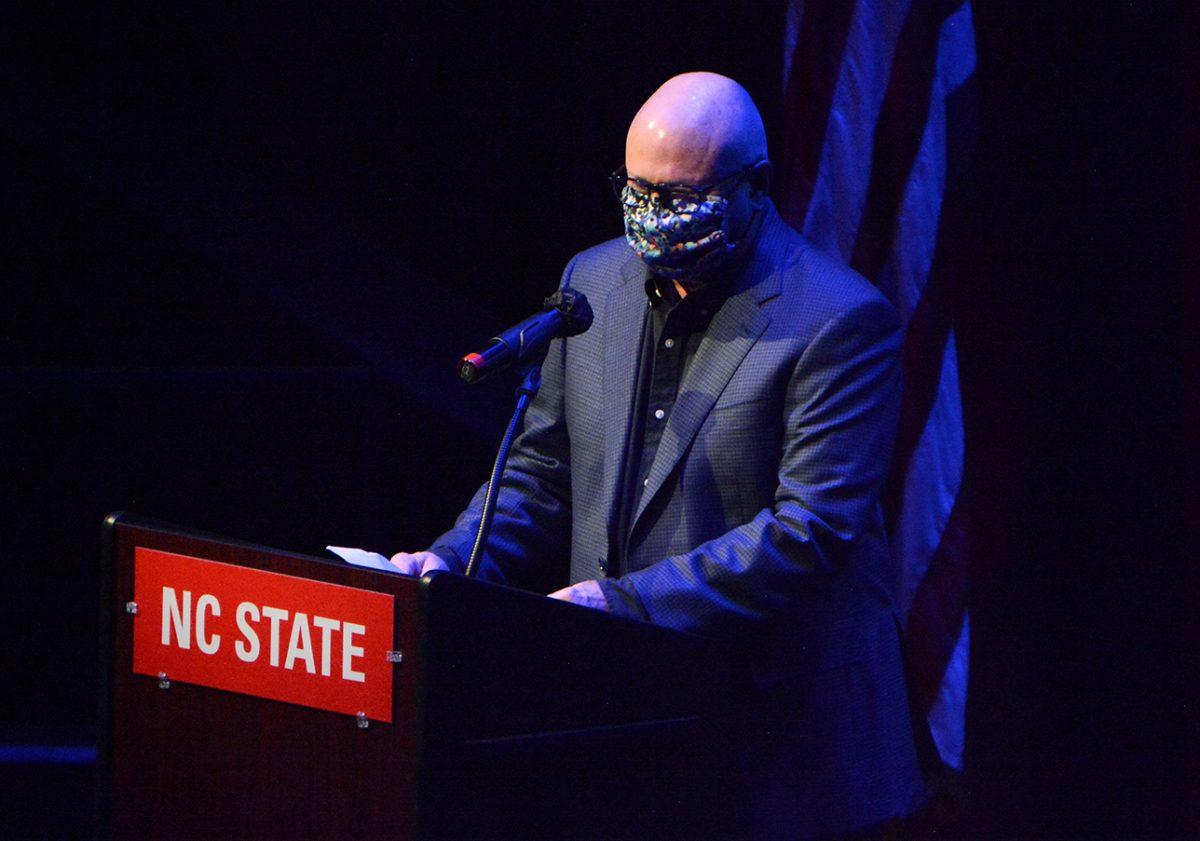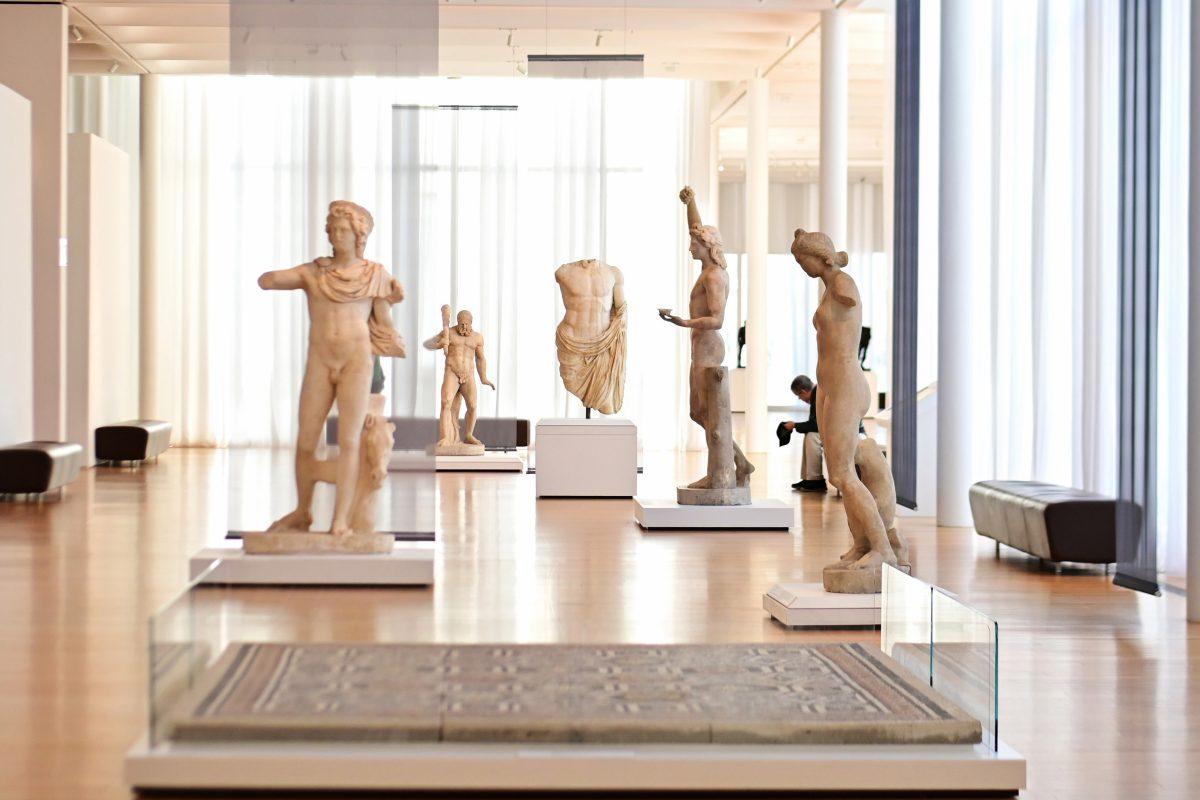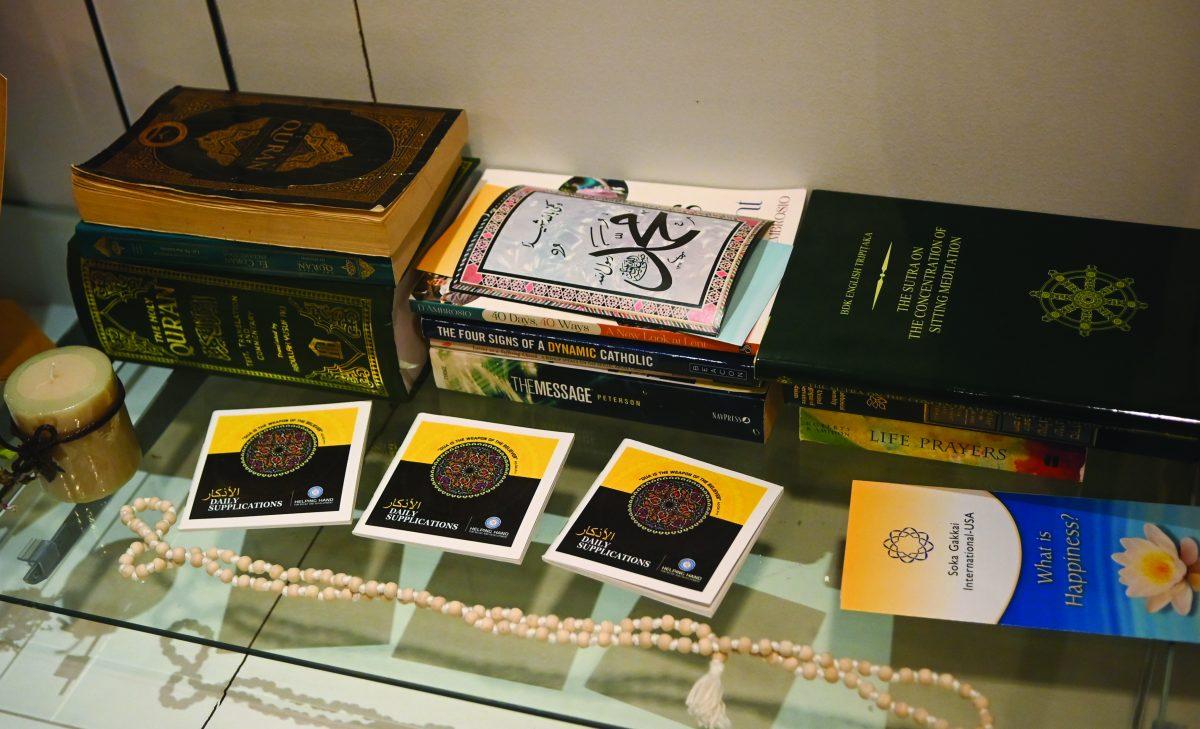Charles Moretz’s vast exhibit “Genius Loci: The Art of Remembrance” currently adorns the walls of NC State’s campus Crafts Center, showcasing several fascinating photographs of the twin towers captured from a breathtaking variety of angles.
Moretz’s art encapsulates themes of beauty, power and upward trajectory representative of the two towers. The exhibit on campus was accompanied by a special memorial ceremony on Sept. 11 at Stewart Theatre, featuring Charles Moretz and a combination of music, poetry, dance and reflection.
“Some said the towers had arrogant beauty,” Moretz said. “But they were my muse. That relationship had a beginning, a middle and a fruition.”
A 1972 graduate of the College of Design, Moretz didn’t spare a day after graduating to move to the place he described as the “can-do” city of New York, where he set sail as an artist on his creative path.
During his first visit to the city in the summer of ‘71, his car broke down and he spent the next few months working for $50 a day to fix it. He never looked back. Moretz came to love Manhattan as his home and got his first apartment downtown on 14th Street and 1st Avenue.
He spent his free time exploring the city, and the “wild west” that was Bowery, Bleecker Street and SoHo — where he moved to as an artist in residence. The young artist soon fell in love with the twin towers and their dominance of the famed city’s skyline from their very first stage of planning until their mighty rule of the skies.
In his short film accompanying the exhibit, Moretz refers to the two towers as “American might on display.”
To express the magnificence of the towers, Moretz quoted a New York Times editorial from Sept. 11, 2016: “The event is hard to grasp in full if you never saw the towers intact. … If you never gazed straight up between the two pinstripe columns and got dizzy at the scale.”
Moretz said even before construction could commence, the tower’s building site required the removal of one million cubic yards of dirt, building three new floors every 10 days.
“It was a surrealistic space in the middle of Manhattan, nothing like it existed before or after,” Moretz said.
Moretz talked about the sheer scale of the towers as he recalled stepping from the concrete jungle of New York City into the wide-open five-acre plaza of modernity, allured by their 1300-feet tall powerful presence and spirit.
“The twins were offset with each other in their space, rising out of the plaza like the desert. … Those were unique relationships that I’ve never seen anywhere before nor since,” Moretz said. “Two twin towers of that size create their own world, like mountains.”
It was no wonder that in 1982, his compelling photographs captured the attention of Guy Tozzoli, the head of the World Trade Center Association at the time. Tozzolli granted Moretz complete access to the inside and outside of the towers in exchange for his photographs to be mounted on the walls at the north tower’s Windows on the World restaurant.
These striking portrayals of the towers decorated the walls of the famed restaurant until the towers were destroyed on Sept. 11. Moretz’s love affair with the twin towers came to a tragic halt that day as he described feeling numb when the towers were first to be hit, recounting the tangle of death and debris that stretched 16 acres. The skies above him were livid with fire and smoke. His beloved buildings were destroyed in front of his eyes, brought down to their knees in a grotesque fashion.
“Our city, sanctified by fire,” Moretz said. “When the towers were destroyed in the attack, my photography was not even anywhere on my mind, it came to my mind in the year after. I want to think about doing something to honor, to remember and to celebrate, because all of my thoughts and memories are about beauty and power and an upward trajectory. That’s what I say about the genius loci, the art of remembrance, it is to remember and honor the beauty.”
Dr. Carol Fountain Nix, the Crafts Center Director at NC State, curated the photography exhibit, extending from Sept 11. to Nov. 5. Nix urges students to visit the Crafts Center and view the art exhibit, including mixed media and work by sculptor Ann Cowperthwaite.
According to Nix, the choice of full-frame photography of the uncropped 7-by-14 inch pictures truly captures the scale and magnificence of the towers, with the 3D pieces, sculptures and vibrant photography creating an immersive experience that invites the viewer to be educated on and honor all that has been lost.
“[The exhibit] depicted the gleaming squalor of the towers out of the destitution of Manhattan at the time, with Moretz [getting] access to the buildings in ways that no one before had,” Nix said.
Nix emphasized that almost every student on campus was either not born yet or too young to remember the tragic events of 9/11, subjecting such important recent historical events to the risk of forgetting. She feels that such recent history must not be corroded by time, and by instilling this message through art on our college campus, repetition will be prevented.
“Remembering how absolutely tall they were, the planes crashing intentionally is forever a haunting memory,” Nix said.
Looking ahead, the artist aims to fulfill his vision of creating a permanent installation to commemorate the twin towers, offering the visitor an otherwise unattainable experience. After all, Moretz soberly reflects on his wish that the twin towers will never be reduced to just a shadow in the sky.














